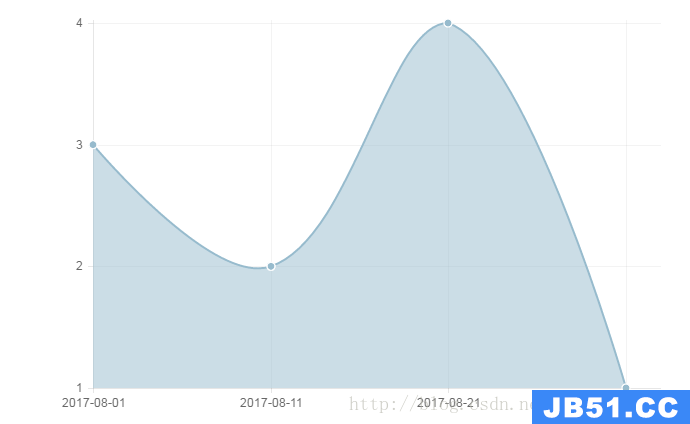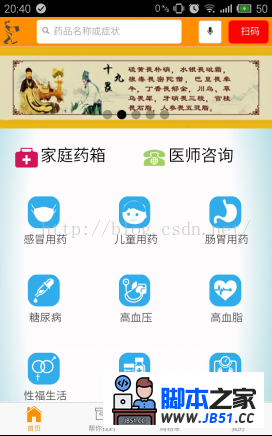Compile (1)
1. 结构
$compile跟其他service一样都需注册一个provider--$CompileProvider就是compile注册进angular的provider。这样$compile可以作为service被注入到其他方法的参数中。
主要的调用路径如下:
compile<1> -> compileNodes<2> -> applyDirectivesToNode<3>
- <1> return publicLinkFn,该fn中调用 <2>返回的fn
- <2> return compositeLinkFn,该fn中调用<3>返回的fn
- <3> return nodeLinkFn
主线就是所说的compile阶段,而对返回的fn进行调用进入link阶段
2. Compile阶段
2.1. compile()
compile为入口fn,主要做3个事情,
- 包装node
- 调用compileNodes
- 返回publicLinkFn供link阶段调用
// 将text包装成<span>text</span>
forEach($compileNodes,function(node,index){
if (node.nodeType == 3 /* text node */ && node.nodeValue.match(/\S+/) /* non-empty */ ) {
$compileNodes[index] = node = jqLite(node).wrap('<span></span>').parent()[0];
}
});
var compositeLinkFn = compileNodes($compileNodes,transcludeFn,$compileNodes,maxPriority,ignoreDirective,previousCompileContext);
return function publicLinkFn(scope,cloneConnectFn,transcludeControllers,parentBoundTranscludeFn)
2.2. compileNodes()
参数会传入nodeList,然后循环执行每个node,执行的事情如下:
1). 收集directives
directives = collectDirectives(nodeList[i]....);
2). 执行applyDirectivesToNode(后续详细分析)
nodeLinkFn = applyDirectivesToNode(directives,nodeList[i]....)
3). 递归调用执行childNodes上的compileNodes
childLinkFn = compileNodes(childNodes...)
4). 返回compositeLinkFn
2.3.applyDirectivesToNode()
该fn的参数,(1)directives,(2)compileNode,其他略
1).即对collectDirectives收集过来directives数组依次编译(compile)compileNode
linkFn = directive.compile($compileNode,templateAttrs,childTranscludeFn);
这里directive为定义的指令,如:
module.directive('xxx',function () {
return {
compile: function () {
return function postLinkFn() {};
}
};
});
return出来的object即为directive,上例可见compile返回出一个postLink的fn,当然完整的应该是一个包含preLink和postLink的object,如:
{
compile: function () {
return {
pre: function () {},post: function () {}
};
}
}
2). 返回的linkFn进行收集,收集至preLinkFns和postLinkFns中,供后续调用
addLinkFns(...)
这边有个isFunction的判断,就是如果返回的只是function,然后就当作post收集,如果是object那么根据所属字段,pre还是post
if (isFunction(linkFn)) {
addLinkFns(null,linkFn,attrStart,attrEnd);
} else if (linkFn) {
addLinkFns(linkFn.pre,linkFn.post,attrEnd);
}
3). 最后返回nodeLinkFn函数
3. Link阶段
compile.publicLinkFn -> compileNodes.compositeLinkFn -> applyDirectivesToNode.nodeLinkFn
3.1.publicLinkFn()
function publicLinkFn(scope,parentBoundTranscludeFn)
1). 给每个element绑定了scope
// Attach scope only to non-text nodes.
for(var i = 0,ii = $linkNode.length; i<ii; i++) {
var node = $linkNode[i],nodeType = node.nodeType;
if (nodeType === 1 /* element */ || nodeType === 9 /* document */) {
$linkNode.eq(i).data('$scope',scope);
}
}
2). 调用之前返回的compositeLinkFn
if (compositeLinkFn) compositeLinkFn(scope,$linkNode,parentBoundTranscludeFn);
3.2.compositeLinkFn()
function compositeLinkFn(scope,nodeList,$rootElement,parentBoundTranscludeFn)
compositeLinkFn主要任务是执行applyDirectivesToNode返回的nodeLinkFn,以及递归调用compileNodes(childNodes)返回的compositeLinkFn
if (nodeLinkFn) {
//判断directive是不是定义的scope:true,进行处理
if (nodeLinkFn.scope) {
childScope = scope.$new();
$node.data('$scope',childScope);
} else {
childScope = scope;
}
//有关transclude的处理,后续分析
if ( nodeLinkFn.transcludeOnThisElement ) {
childBoundTranscludeFn = createBoundTranscludeFn(scope,nodeLinkFn.transclude,parentBoundTranscludeFn);
} else if (!nodeLinkFn.templateOnThisElement && parentBoundTranscludeFn) {
childBoundTranscludeFn = parentBoundTranscludeFn;
} else if (!parentBoundTranscludeFn && transcludeFn) {
childBoundTranscludeFn = createBoundTranscludeFn(scope,transcludeFn);
} else {
childBoundTranscludeFn = null;
}
nodeLinkFn(childLinkFn,childScope,node,childBoundTranscludeFn);
} else if (childLinkFn) {
//childLinkFn === compositeLinkFn
childLinkFn(scope,node.childNodes,undefined,parentBoundTranscludeFn);
}
//有段细节的地方,为什么要复制一个node数组出来呢?
//因为link阶段会对nodeList增加删除,会影响linkFn数组的执行
//复制出来数组能保证每个linkFn都会准确地执行
var nodeListLength = nodeList.length,stableNodeList = new Array(nodeListLength);
for (i = 0; i < nodeListLength; i++) {
stableNodeList[i] = nodeList[i];
}
3.3.nodeLinkFn()
nodeLinkFn是执行之前众多directive的compile后收集的pre和post方法
// 对scope定义中@=&的解析,生成isolateScope
forEach(newIsolateScopeDirective.scope,function(definition,scopeName) {
var match = definition.match(LOCAL_REGEXP) || [],attrName = match[3] || scopeName,optional = (match[2] == '?'),mode = match[1],// @,=,or &
lastValue,parentGet,parentSet,compare;
isolateScope.$$isolateBindings[scopeName] = mode + attrName;
switch (mode) {
case '@':
break;
case '=':
break;
case '&':
break;
default:
throw $compileMinErr('iscp',"Invalid isolate scope definition for directive '{0}'." +
" Definition: {... {1}: '{2}' ...}",newIsolateScopeDirective.name,scopeName,definition);
}
})
接着以此执行controllerFns >preLinkFns > 递归childNodeLinkFn > postLinkFns
这就解释了dirtive中link,compile,ctrl顺序是 A.ctrl > A.preLink > a.ctrl > a.preLink > a.postLink > A.postLink
a是A的child-node
1)controllers执行
if (controllerDirectives) {
forEach(controllerDirectives,function(directive) {
var locals = {
$scope: directive === newIsolateScopeDirective || directive.$$isolateScope ? isolateScope : scope,$element: $element,$attrs: attrs,$transclude: transcludeFn
},controllerInstance;
controller = directive.controller;
// 当配置controller: @ 时使用attr中配置的名字
if (controller == '@') {
controller = attrs[directive.name];
}
//实例化controller
controllerInstance = $controller(controller,locals);
elementControllers[directive.name] = controllerInstance;
if (!hasElementTranscludeDirective) {
$element.data('$' + directive.name + 'Controller',controllerInstance);
}
// 当配置controllerAs时将实例绑定到scope上
if (directive.controllerAs) {
locals.$scope[directive.controllerAs] = controllerInstance;
}
});
}
2) preLink 执行
// PRELINKING
for(i = 0,ii = preLinkFns.length; i < ii; i++) {
try {
linkFn = preLinkFns[i];
linkFn(linkFn.isolateScope ? isolateScope : scope,$element,attrs,linkFn.require && getControllers(linkFn.directiveName,linkFn.require,elementControllers),transcludeFn);
} catch (e) {
$exceptionHandler(e,startingTag($element));
}
}
getControllers()是用来获取directive中定义require的driective的ctrl
3) childLinkFn
childLinkFn(scopeToChild,linkNode.childNodes,boundTranscludeFn);
4) postLink
// POSTLINKING
for(i = postLinkFns.length - 1; i >= 0; i--) {
try {
linkFn = postLinkFns[i];
linkFn(linkFn.isolateScope ? isolateScope : scope,startingTag($element));
}
}
所有linkFn (pre和post) 参数都一样
function link (scope,element,ctrls,transclude);
4. transclude
4.1 transclude的定义配置
先回忆下transclude配置
{
transclude: true // or 'element'
}
- 当配置element时,被transclude的是整个元素
- 当配置true是,被transclude的只是该元素的子元素
4.2 transclude主要源码
又是一个调用链,最终调用入口在用户定义的link中,例如:
{
link: function (scope,el,transclude) {
transclude();
}
}
那该参数是什么地方传入的?
截取nodeLinkFn中执行postLink的代码(preLink也一样,省略)
linkFn(linkFn.isolateScope ? isolateScope : scope,transcludeFn);
就是最后那个参数,那么最后的那个参数到底是什么?
// boundTranscludeFn 是nodeLinkFn的参数
// function nodeLinkFn(childLinkFn,scope,linkNode,boundTranscludeFn)
// 表明当存在boundTranscludeFn时,将controllersBoundTransclude赋值给transcludeFn
transcludeFn = boundTranscludeFn && controllersBoundTransclude;
//... (省略中间代码)
// 处理了两件事:
// 1、无参数或者一个参数时,scope=undefined
// 2、将该element上的controllers赋值给第三个参数
function controllersBoundTransclude(scope,cloneAttachFn) {
var transcludeControllers;
// no scope passed
if (arguments.length < 2) {
cloneAttachFn = scope;
scope = undefined;
}
if (hasElementTranscludeDirective) {
transcludeControllers = elementControllers;
}
return boundTranscludeFn(scope,cloneAttachFn,transcludeControllers);
}
这么看link中传入的参数transcludeFn,其实还是nodeLinkFn的参数boundTranscludeFn,只是做了下参数处理
由上面分享可知,nodeLinkFn是在compositeLinkFn中调用,那么该参数也由此传入,代码如下
// 当该element就是定义了directive并且配置了transclude
// 调用createBoundTranscludeFn生成childBoundTranscludeFn,!注意!参数传入的是nodeLinkFn.transclude
if (nodeLinkFn.transcludeOnThisElement) {
childBoundTranscludeFn = createBoundTranscludeFn(scope,parentBoundTranscludeFn);
}
// 当该elementd的parent定义了transclude的directive
// 直接使用父transcludeFn parentBoundTranscludeFn
else if (!nodeLinkFn.templateOnThisElement && parentBoundTranscludeFn) {
childBoundTranscludeFn = parentBoundTranscludeFn;
} else if (!parentBoundTranscludeFn && transcludeFn) {
childBoundTranscludeFn = createBoundTranscludeFn(scope,transcludeFn);
} else {
childBoundTranscludeFn = null;
}
nodeLinkFn(childLinkFn,childBoundTranscludeFn);
// ...
// transcludeFn 就是第一if情况中的nodeLinkFn.transclude
// previousBoundTranscludeFn 就是parentBoundTranscludeFn
function createBoundTranscludeFn(scope,previousBoundTranscludeFn) {
var boundTranscludeFn = function(transcludedScope,cloneFn,controllers) {
var scopeCreated = false;
// 传入scope就使用传入的参数,没有就使用当前scope.$new
if (!transcludedScope) {
transcludedScope = scope.$new();
transcludedScope.$$transcluded = true;
scopeCreated = true;
}
var clone = transcludeFn(transcludedScope,controllers,previousBoundTranscludeFn);
if (scopeCreated) {
clone.on('$destroy',function() { transcludedScope.$destroy(); });
}
return clone;
};
return boundTranscludeFn;
}
所以看代码知,处理了下scope,以及监听了$destroy事件进行销毁,然后就是调用传入的第二个参数transcludeFn
而transcludeFn就是nodeLinkFn.transclude,回到nodeLinkFn生成的地方--applyDirectivesToNode()
// 配置 transclude:'element'时是整个元素进行compile
// 配置 transclude: true时是子元素进行compile
if (directiveValue == 'element') {
hasElementTranscludeDirective = true;
terminalPriority = directive.priority;
$template = groupScan(compileNode,attrEnd);
$compileNode = templateAttrs.$$element =
jqLite(document.createComment(' ' + directiveName + ': ' +
templateAttrs[directiveName] + ' '));
compileNode = $compileNode[0];
replaceWith(jqCollection,jqLite(sliceArgs($template)),compileNode);
// 递归调用compile返回publicLinkFn
// 传入当前directive的priority,作为终止priority防止死循环
childTranscludeFn = compile($template,terminalPriority,replaceDirective && replaceDirective.name,{
nonTlbTranscludeDirective: nonTlbTranscludeDirective
});
}
else {
$template = jqLite(jqLiteClone(compileNode)).contents();
$compileNode.empty(); // clear contents
childTranscludeFn = compile($template,transcludeFn);
}
// ...
nodeLinkFn.transclude = childTranscludeFn;
因此,childTranscludeFn其实就是compile返回的publicLinkFn,分析结论:transcludeFn其实就是调用publicLinkFn
4.3 transcludeFn的传承
当template中含有directive时如何在该子directive的link中获取到$transclude(即parent的原有childNode的publicLinkFn)来调用
在nodeLinkFn中存在以下代码
childLinkFn && childLinkFn(scopeToChild,boundTranscludeFn);
该boundTranscludeFn是没有经过controllersBoundTransclude()包装过因为每个element的directive对应的controllers不同需要现用现调
由此传入publicLinkFn的parentBoundTranscludeFn
function publicLinkFn(scope,parentBoundTranscludeFn)
然后在compositeLinkFn中洗白成childBoundTranscludeFn,最终流入到link的参数$transclude供使用
else if (!nodeLinkFn.templateOnThisElement && parentBoundTranscludeFn) {
childBoundTranscludeFn = parentBoundTranscludeFn;
}
nodeLinkFn(childLinkFn,childBoundTranscludeFn);
4.4 应用
由此延展,当定义了transclude的directive,link方法中可以调用transcludeFn来获取compile和link后的子元素,例如
directive('myDir',function () {
return {
transclude: true,replace: true,template: '<div class="my-dir"></div>'
link: function (scope,transcludeFn) {
var childNodes = transcludeFn(scope);
childNodes.addClass('my-child-nodes');
element.append(childNodes);
}
}
});
/** before
<my-dir>
<div>1</div>
<div>2</div>
<div>3</div>
</my-dir>
**/
/** after
<div class="my-dir">
<div class="my-child-nodes">1</div>
<div class="my-child-nodes">2</div>
<div class="my-child-nodes">3</div>
</div>
**/
可以联想到ng-transclude
var ngTranscludeDirective = ngDirective({
link: function($scope,$attrs,controller,$transclude) {
if (!$transclude) {
throw minErr('ngTransclude')('orphan','Illegal use of ngTransclude directive in the template! ' +
'No parent directive that requires a transclusion found. ' +
'Element: {0}',startingTag($element));
}
$transclude(function(clone) {
$element.empty();
$element.append(clone);
});
}
});
这里使用到cloneFn,关于cloneFn见下:
var $linkNode = cloneConnectFn ? JQLitePrototype.clone.call($compileNodes) : $compileNodes; // ... if (cloneConnectFn) cloneConnectFn($linkNode,scope); if (compositeLinkFn) compositeLinkFn(scope,parentBoundTranscludeFn); return $linkNode;
- 进行jq的clone
- 调用cloneFn
这边我有个疑问:为什么要先clone下呢?望知道的指点下,谢谢!
链接
angularjs源码笔记(1.1)--directive compile
angularjs源码笔记(1.2)--directive template
angularjs源码笔记(2)--inject
angularjs源码笔记(3)--scope

 AngularJS中使用Chart.js制折线图与饼图实例 Chart.js 是...
AngularJS中使用Chart.js制折线图与饼图实例 Chart.js 是... IE浏览器兼容性后续前言 继续尝试解决IE浏览器兼容性问题,...
IE浏览器兼容性后续前言 继续尝试解决IE浏览器兼容性问题,... Angular实现下拉菜单多选写这篇文章时,引用文章地址如下:h...
Angular实现下拉菜单多选写这篇文章时,引用文章地址如下:h... 在AngularJS应用中集成科大讯飞语音输入功能前言 根据项目...
在AngularJS应用中集成科大讯飞语音输入功能前言 根据项目... Angular数据更新不及时问题探讨前言 在修复控制角标正确变...
Angular数据更新不及时问题探讨前言 在修复控制角标正确变...